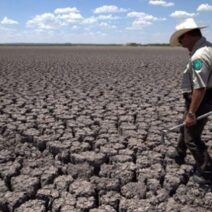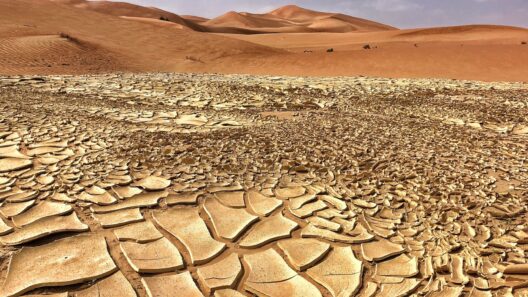The Gulf Stream, an intricate part of the Atlantic Meridional Overturning Circulation (AMOC), is not merely a water current; it is an essential lifeline for the global climate system. Stretching from the Gulf of Mexico, up the eastern coast of the United States, across the Atlantic Ocean towards Europe, this warm ocean current plays a pivotal role in regulating climate and weather patterns. The significance of the Gulf Stream lies beyond its geographical stretch; it influences temperature distributions, impacts marine biodiversity, and serves as a buffer against climate extremes. Understanding its complexities can enrich our perspectives on climate change and highlight the delicate balance that sustains life on Earth.
The mechanics of the Gulf Stream are both formidable and fascinating. Driven by wind patterns, Earth’s rotation, and the salinity of ocean waters, the current transports warm water from equatorial regions to the northern latitudes. This transfer of heat is crucial, as it helps to moderate temperatures throughout Europe. Without the Gulf Stream, countries such as the United Kingdom would experience a markedly different climate—colder and more inhospitable. The phenomenon known as ‘thermal regulation’ that the Gulf Stream provides is indispensable for maintaining the temperate conditions that allow diverse ecosystems to flourish.
Moreover, the Gulf Stream intricately intertwines with atmospheric processes. As warm waters evaporate, they release moisture into the atmosphere, driving rainstorms and influencing weather systems across continents. This precipitation, vital for agriculture and freshwater supplies, is a direct consequence of the warmth carried by the Gulf Stream. Any perturbation in this current can lead to far-reaching consequences, such as increased droughts in some regions and unprecedented flooding in others. A nuanced understanding of these interactions can awaken curiosity about how a single natural phenomenon can create a cascade of climatic effects.
However, the Gulf Stream is not invulnerable. As the planet warms due to anthropogenic greenhouse gas emissions, the delicate equilibrium that has governed ocean currents for millennia is at risk. The melting of polar ice and Greenland’s ice sheet contributes to the freshening of ocean waters, likely disrupting the salinity that drives the Gulf Stream’s intensity. If the current weakens, it could alter weather patterns drastically, resulting in colder winters in Europe, intensified hurricanes in the Atlantic, and disrupted monsoon cycles in Africa and Asia. This potential for cataclysmic shifts highlights the urgency of understanding and mitigating climate change.
In conjunction with the Gulf Stream, sea level rise poses another existential threat to coastal populations. With warmer ocean temperatures contributing not only to melting icecaps but also to thermal expansion of seawater, many coastal cities face the looming specter of inundation. The Gulf Stream, which is also responsible for shifting sea levels along the eastern seaboard of the United States, exacerbates these vulnerabilities. Communities must prepare, adapt, and innovate in the face of this multifaceted challenge.
The consequences of a weakened Gulf Stream extend beyond localized issues; they reverberate throughout the planet. Changes in ocean currents can foster the proliferation of harmful algal blooms, deplete oxygen levels in ocean waters, and alter fish migration patterns. As species struggle to adapt, the biodiversity that sustains marine ecosystems may face unprecedented threats, fundamentally altering the dynamics of life in the oceans. For fishermen and coastal communities reliant on healthy fisheries, this change can be devastating.
Yet, amidst the foreboding narrative of change, there exists a promise—a shift in perspective. The challenges posed by climate change compel society to innovate, adapt, and most importantly, collaborate. Understanding the Gulf Stream’s role emphasizes the interconnectivity of global systems. It encourages the acknowledgment that local actions, whether positive or negative, can have widespread implications. International initiatives aimed at addressing climate change often emphasize collaborative efforts to mitigate impacts, and the role of oceans, including vital currents like the Gulf Stream, is central to these discussions.
By capitalizing on advancements in technology and harnessing scientific research, nations can develop more resilient coastal infrastructure, promote sustainable fishing practices, and implement policies targeting carbon emissions. Education and awareness campaigns can further galvanize public interest and action toward mitigating climate change impacts on ocean currents and marine ecosystems. Learning about the Gulf Stream can galvanize communities to take ownership of their environmental footprint and advocate for policies that prioritize sustainability.
The awareness we glean from the Gulf Stream exemplifies that climate regulation transcends individual nations or regions; it represents a collective human responsibility. As stewards of our planet, all must recognize that protecting our oceans and their currents is protecting our future. The role of the Gulf Stream invites us to look beyond immediate concerns and see the broader context of climate action. As we unite to tackle climate change, we must recognize that although the currents may seem distant, they are intimately connected to our everyday lives.
In conclusion, the Gulf Stream exemplifies the delicate, yet powerful, relationship between ocean currents and climate systems. By nurturing a deeper understanding of this phenomenon, we can foster a collective resolve to address climate change. As humanity navigates this tumultuous era, recognizing the Gulf Stream’s intrinsic value may well guide us toward a more sustainable future for generations to come. The currents that count are not just those of the Gulf Stream; they are the currents of our actions, policies, and shared vision for a thriving planet.





